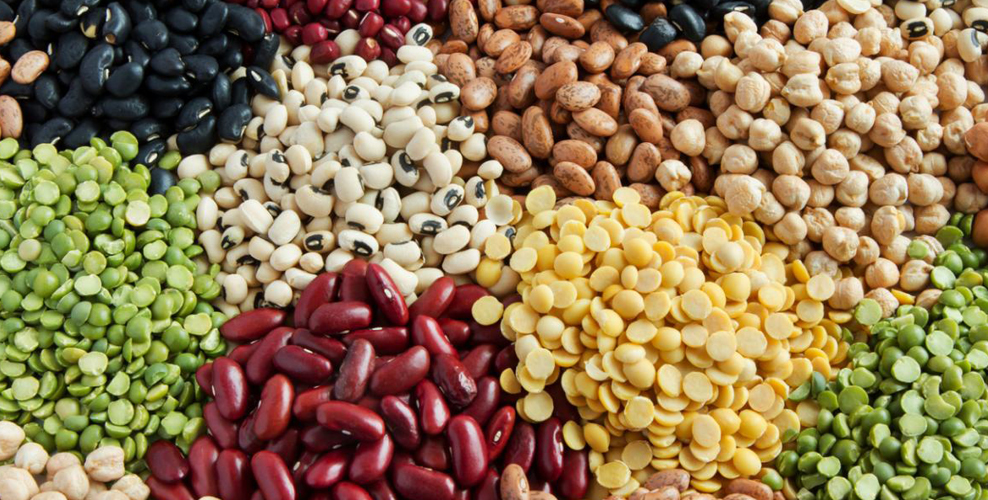Which foods contain magnesium?

What's magnesium?
Magnesium is an essential mineral that we need to obtain from our diets.
It's involved in hundreds of physiological functions, including supporting cellular energy production, bone health and the healthy functioning of the muscles and nerves.
Magnesium-rich foods
Foods that are naturally rich in magnesium include an extensive range of foods, including vegetables, legumes, nuts and seeds.
Read on to discover just a few of the many magnesium-rich foods to consider including in your diet if you're keen to maintain your magnesium levels.
Magnesium-rich nuts and seeds1
Nuts, seeds and products made from them are some of the richest sources of magnesium. Think about snacking on pepitas and sunflower seeds, almonds and almond butter, cashews and Brazil nuts. Sesame seeds and tahini are also great options, especially if you choose the unhulled (dark-coloured) varieties.
Vegetables that contain magnesium
Magnesium is a component of chlorophyll2, the compound that gives leaves their green colour. That means you'll find it in leafy greens like spinach, kale and silverbeet, as well as in other green veggies, including peas and runner beans1.
Other vegetables that provide useful amounts of magnesium include beetroot, corn and shiitake mushrooms1.
Eat whole grains and legumes for magnesium

You already know that wholegrains are a healthier and more nutritious choice than refined flours and cereals. Their superior magnesium content is just one of the reasons why!
For example, the amount of magnesium in refined wheat (which has had its inner germ and outer layers removed) may be as little as a quarter of that found in wholegrain wheat2.
In addition to wholegrain wheat, other wholegrains to include on your menu when you're thinking about magnesium include buckwheat, rye, oats and quinoa1.
Many legumes are also rich in magnesium. Think soybeans (as well as tofu and edamame), chickpeas (including hummus), and kidney, cannellini and pinto beans1.
Chocolate contains magnesium too!

The rumours you've heard are true! Chocolate does contain magnesium, especially if you choose dark chocolate with at least 60% cacao solids. Alternatively, try unsweetened cocoa powder in your cooking or as a delicious drink1.
How much magnesium do you need each day?3
For men, the estimated average requirement (EAR) for magnesium is 330mg per day for men aged 19-30 years, and 350mg per day for those aged 31 and older.
The EAR for women aged 19-30 is 255mg per day, rising to 265mg per day for women 31 years and older.
Teenagers aged 14-18 need slightly larger amounts (340mg per day of boys in this age group and 300mg per day for girls).
Younger children of both genders need lesser amounts: 65mg per day for 2-3 year olds; 110mg per day for 4-8 year olds, and 200mg per day for 9-13 year olds.
Who's missing out on magnesium?4
Even though magnesium is found in a wide variety of foods3, 2011-2012 research from the Australian Bureau of Statistics (ABS) indicates that more than 37% of males and 34% of females aged over 2 years in Australia did not meet the EAR for magnesium from their diets.
Teenagers 14-18 years old and people aged over 70 are particularly prone to not consuming EAR amounts of magnesium.
If you're concerned that you or your kids might be missing out on magnesium, start by adding some of the foods discussed above into your menu each week.
What affects magnesium absorption?
Magnesium absorption appears to be enhanced in the presence of protein, vitamin D and some types of carbohydrate2.
On the other hand, your body's ability to absorb magnesium declines in the presence of alcohol, excess saturated fat, and high levels of fibre and phytates5 (compounds naturally present in some vegetables, including spinach).
What else affects your magnesium levels?
Your kidneys play a key role in maintaining your body's magnesium levels, and having too much sodium (salt), phosphoric acid (from soft drinks), caffeine or alcohol in your system may inhibit their ability to do so5.
Prolonged sweating is another factor that can cause magnesium levels to be diminished5. This is an important consideration for those who exercise intensely or for long periods of time, as well as those who live, work or exercise in hot or humid climates.
And finally, during periods of intense stress, you may excrete magnesium at a faster rate than usual5, suggesting that you may benefit from topping up your intake when under pressure.

What should I look for in a magnesium supplement?
If you've decided to take a magnesium supplement to support muscle function and bone health look for one that contains magnesium sources such as magnesium glycinate, magnesium citrate and magnesium amino acid chelate, which are available together in magnesium tablets such as Fusion Magnesium Advanced. These types of magnesium are more readily absorbed and available to the body than magnesium from some other sources (such as magnesium oxide)6,7.
Alternatively, consider a magnesium powder supplement such as Fusion Magnesium Advanced Powder that also contains B-group vitamins, vitamin C and trace minerals such as zinc, chromium and selenium.
Try our magnesium-rich soup recipe!
Looking for an easy way to add some magnesium to your menu? Our delicious Cannellini, Cauliflower and Green Veggie Soup is a great start! Head here to get the recipe.
References:
- SelfNutritionData. Nutrients in food tool. Accessed July 2020 from https://nutritiondata.self.com/tools/nutrient-search
- Gropper, S.S. & Smith, J.L. Advanced Nutrition and Human Metabolism. Cengage Learning, 2012.
- Australian Government, Department of Health and Ageing, National Health and Medical Research Council, Ministry of Health, New Zealand. Nutrient reference values for Australia and New Zealand, including recommended dietary intakes, version 1.2. Canberra: Commonwealth of Australia, 2017.
- ABS. Food Standards Australia New Zealand. Australian Health Survey: Usual nutrient intakes 2011-12. Commonwealth of Australia, 2015.
- Braun L, Cohen M. Herbs and natural supplements., 3rd ed Sydney: Churchill Livingstone, 2010. Kindle edition.
- Walker, A.F. et al. Magnes Res, 2003;16(3):183-91.
- Firoz, M. & Graber, M. Magnes Res, 2001;14(4):257-62.
Always read the label and follow the directions for use.
















